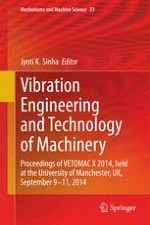2015 | OriginalPaper | Buchkapitel
Novel Approach for Structural Dynamic Topology Optimizations Based on Power Flow Mode Theory
verfasst von : Ye-Ping Xiong
Erschienen in: Vibration Engineering and Technology of Machinery
Aktivieren Sie unsere intelligente Suche, um passende Fachinhalte oder Patente zu finden.
Wählen Sie Textabschnitte aus um mit Künstlicher Intelligenz passenden Patente zu finden. powered by
Markieren Sie Textabschnitte, um KI-gestützt weitere passende Inhalte zu finden. powered by
